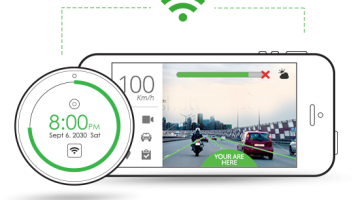TinkerBots is a modular robotics building set with the aim of encouraging children to learn about electronics through play. The Berlin-based makers behind the project are seeking to raise $100,000 over the next 46 days via the Indiegogo crowdfunding platform to get their kits to market.
This is just the latest education-focused project trying to leverage something fun to teach something complex. Another recent example is Robotiky, which pairs a controllable robot with a drag and drop interface in order to help kids learn how to code.
TinkerBots is much more focused on hardware, though. Its kits comprise a variety of modular blocks that allow for many different robots to be put together.
It’s similar to the MOSS modular robotics kit which the maker of Cubelets Kickstarted last November (going on to raise more than $360,000 via the platform), but TinkerBots are aiming for a slightly younger user-base than MOSS, with an even more simplified approach to building bots.
-
TinkerBots_Snake_Robot
-
tinkerbots_here_is_how_it_works_l
-
TinkerBots pieces
-
tinkerbots_smartphone_app_2
-
tinkerbots_sensor_racer
-
tinkerbots_racer
-
tinkerbots_grabber
-
tinkerbots_ant
-
TinkerBots_Pieces_Solar_Propeller
Each TinkerBot robot requires a power block if it’s to be able to animate (the red cube is the power block). This includes a battery, Bluetooth 4.0 connectivity, an Arduino-compatible microcontroller, plus other sensors such as a gyro/accelerometer.
The rest of the robot is put together using various kinetic modules, which support different types of movements (such as twisting, pivoting and rolling), and wireless or passive connector blocks. Connecting up the pieces is designed to be ‘child’s play’, with blocks snapping together like Lego and no wiring or programming required to get them to animate.
(That said, there is a USB port for programming purposes, should the user wish to do a bit more hacking, and TinkerBot’s use of an Arduino-compatible microcontroller platform allows for creations to be programmed using C — giving the kits a broader appeal beyond the main target of young kids.)
Various sensors can also be incorporated into TinkerBot creations, such as light detection and distance measurement. The blocks are also compatible with basic Lego and Technic Lego, using an adaptor block, so they can be extended with additional detail and abilities using Lego bricks.
TinkerBot’s basic idea is to be a lot freer, in terms of what the user can build, than the kit-based approach of animated Lego, such as Technic Lego and Lego Mindstorms. It’s also designed to be accessible to younger kids, thanks to its modular, plug and play approach.
To get TinkerBots moving, the kit includes a block with an integrated record mode which allows the user to record a particular motion or movement — by manually animating the robot — and then have the bot repeat it when they hit play.
More advanced program and play functionality is incorporated into the system via a companion app that allows for more granular remote control over the bots you build.
TinkerBot’s makers aren’t making any specific shipping timeframe commitments for the different crowdfunding pledges being offered, but they say they are hoping to be able to ship kits to backers in time for the 2014 holiday season.
The cost of the kits varies, depending on how many pieces you opt for, with an entry level Basic Wheeler set (which can be used to build a Bluetooth-controlled car) costing $159, rising to $499 for a Sensoric Mega kit (to allow for making machines that can recognise an obstacle and manoeuvre around it).
Early Indiegogo backers can also bag the Advanced Builder kit (which can be used to make multiple creations, from machines to animals) for $269, instead of the standard $299 price.
This post was originally published on this site




No Comment